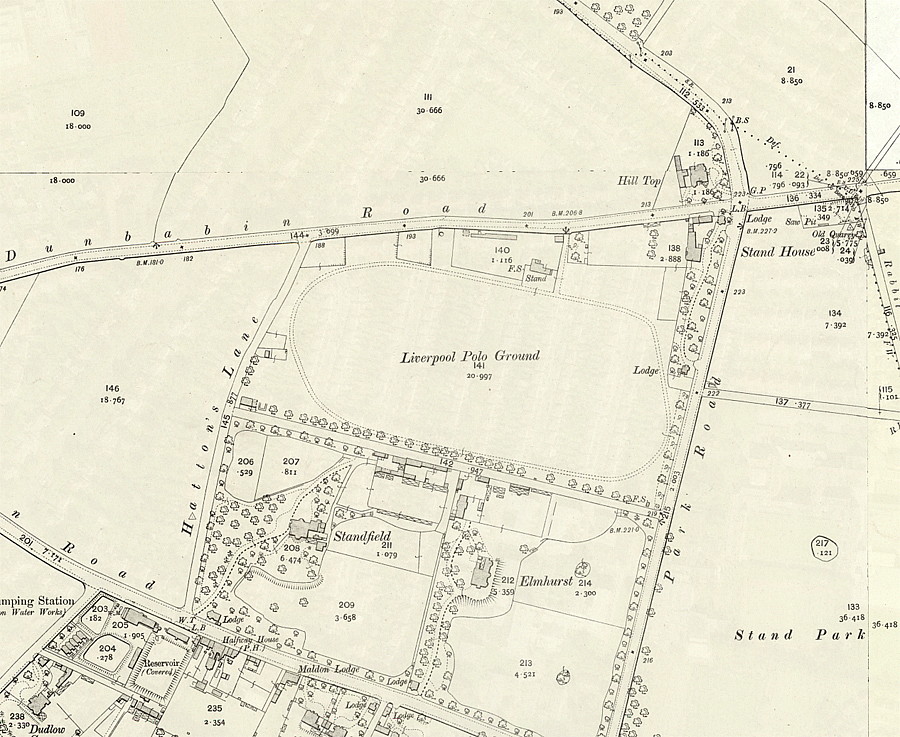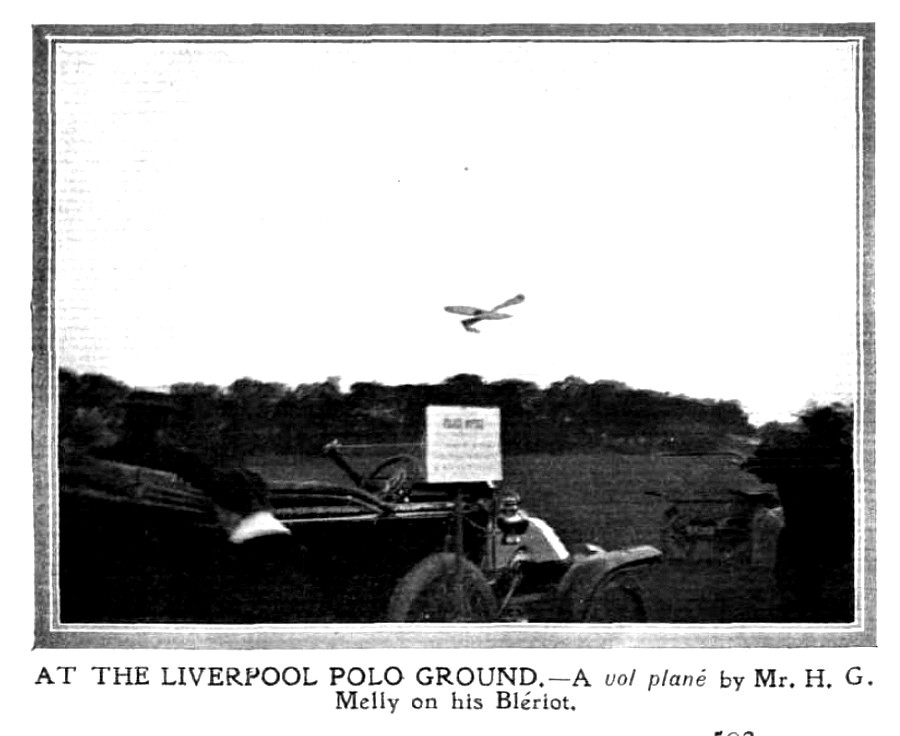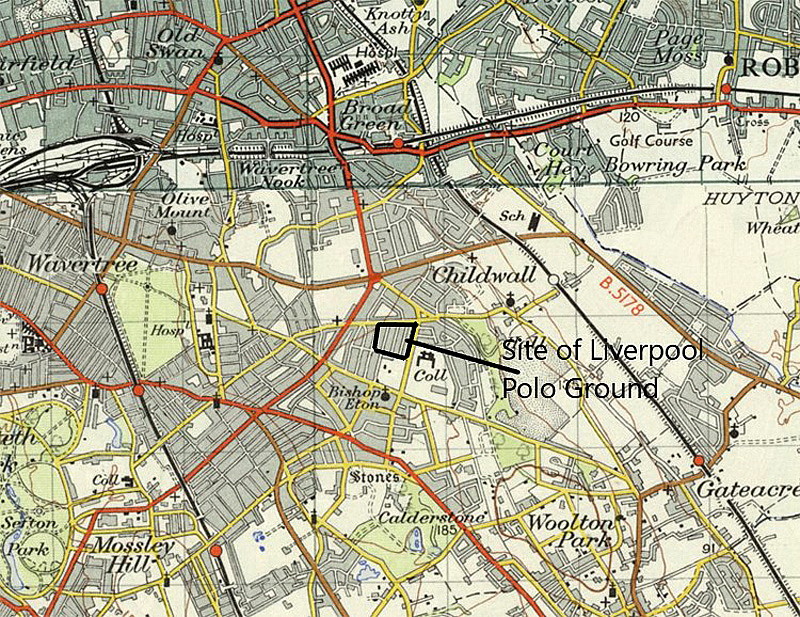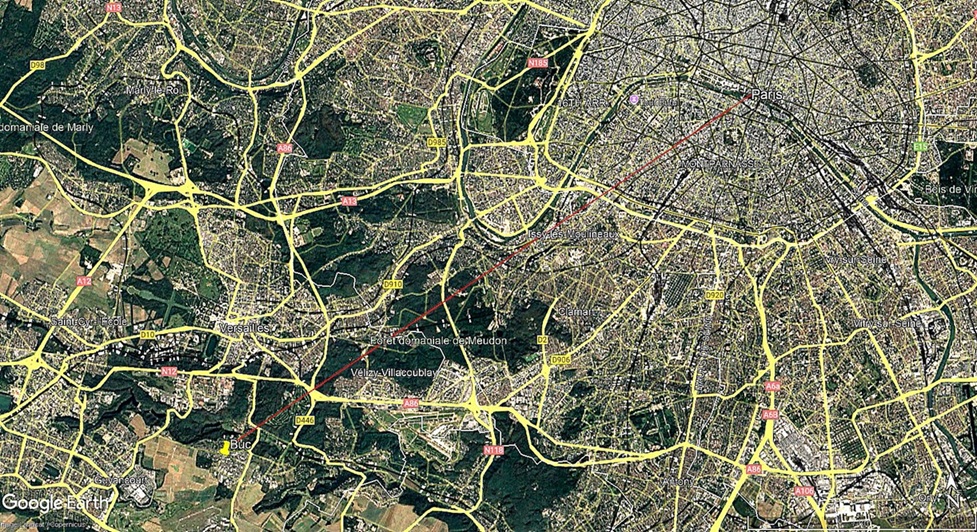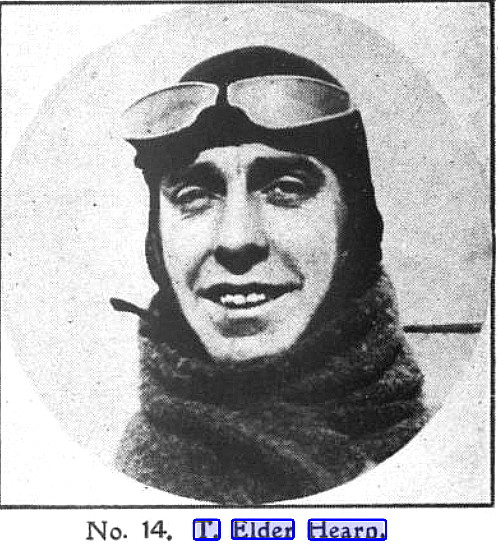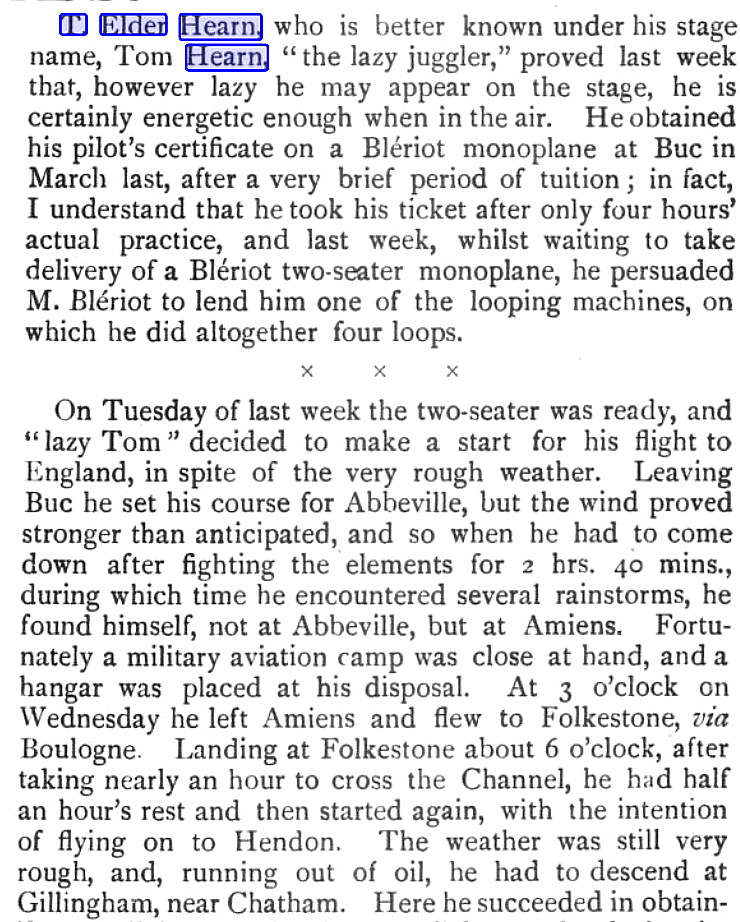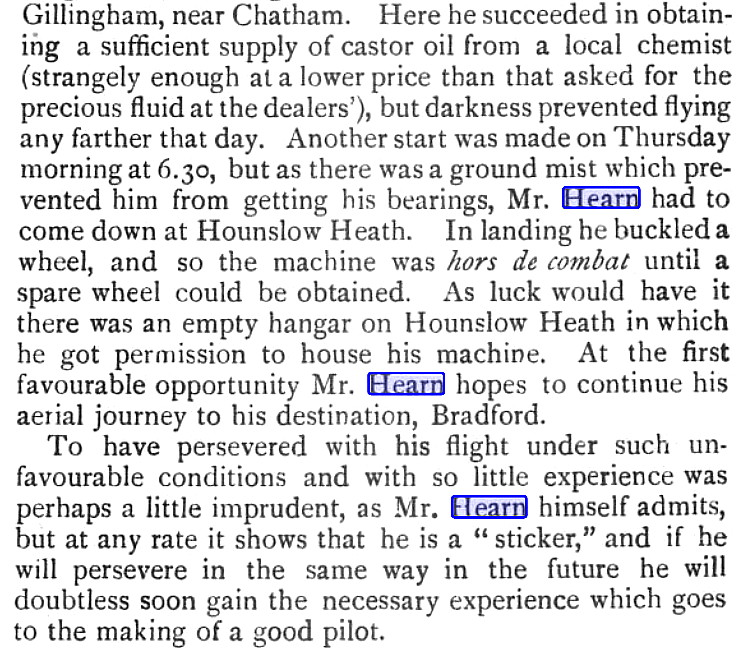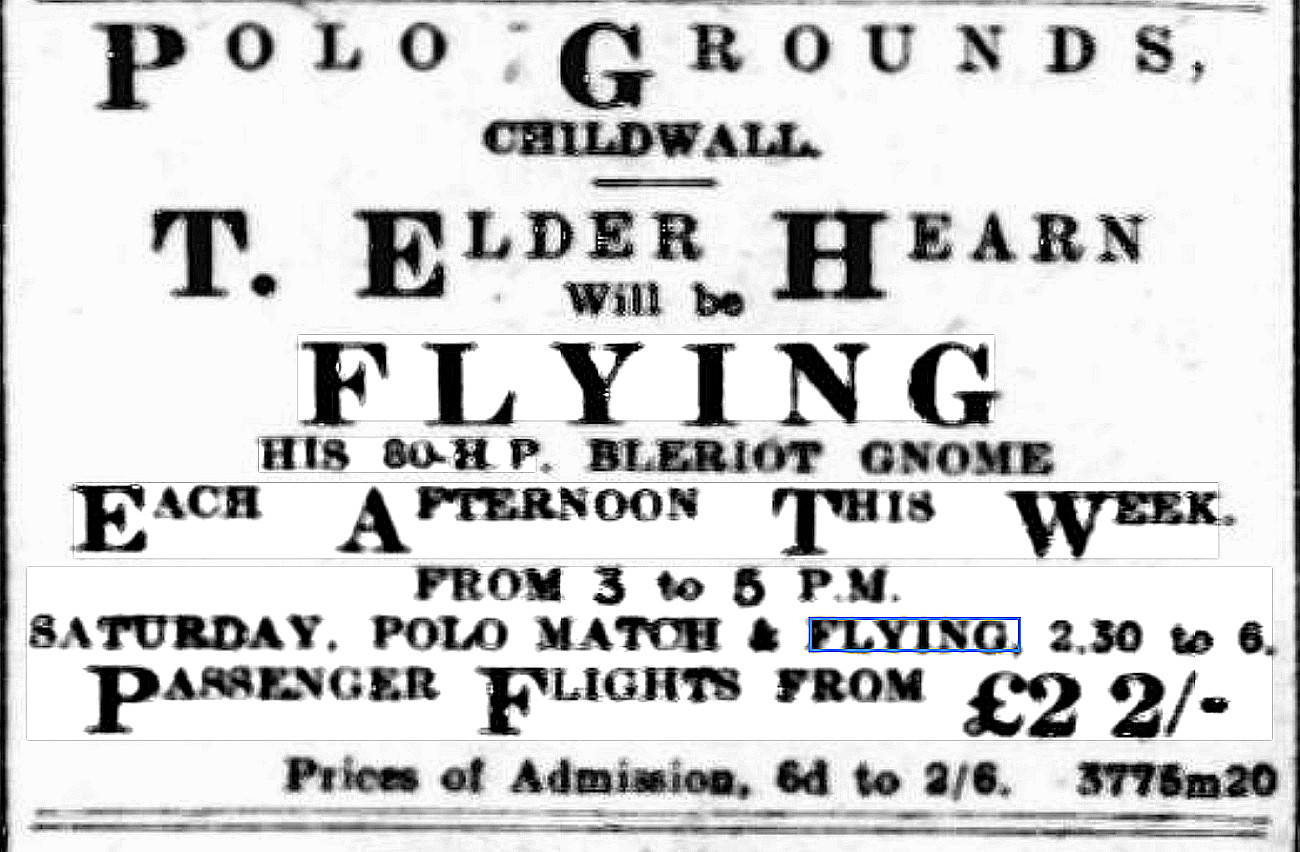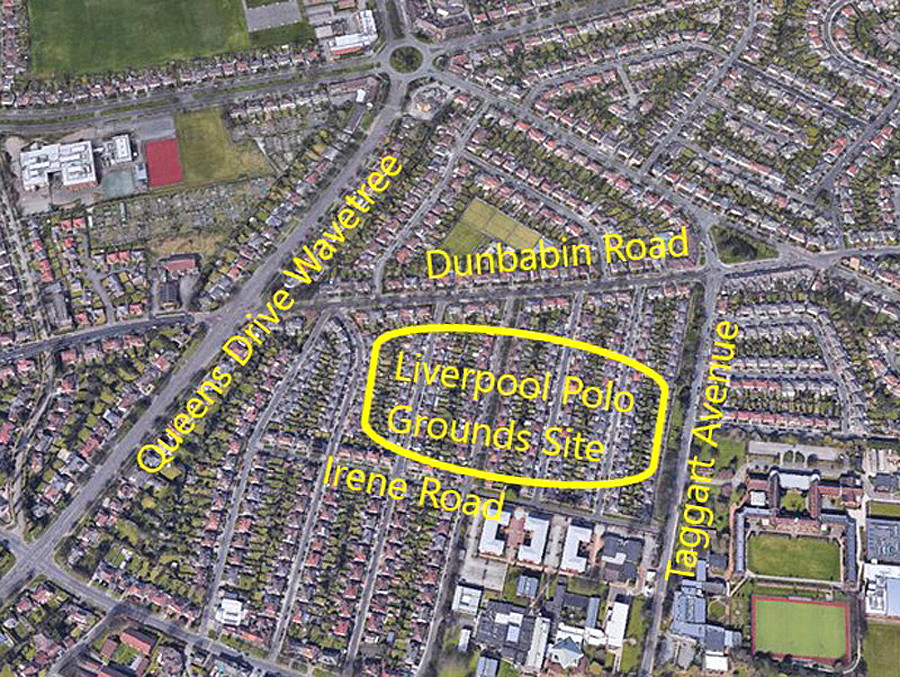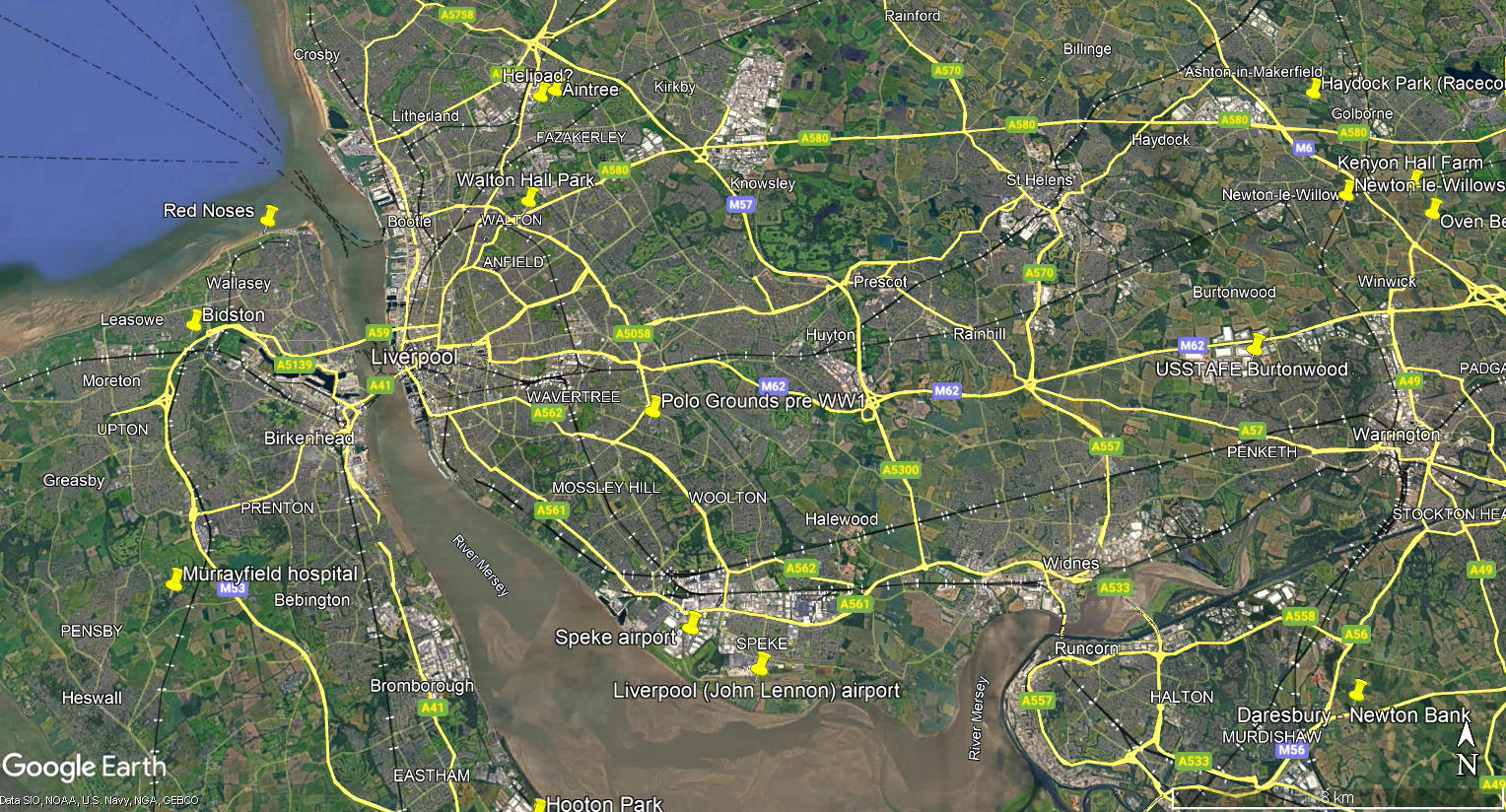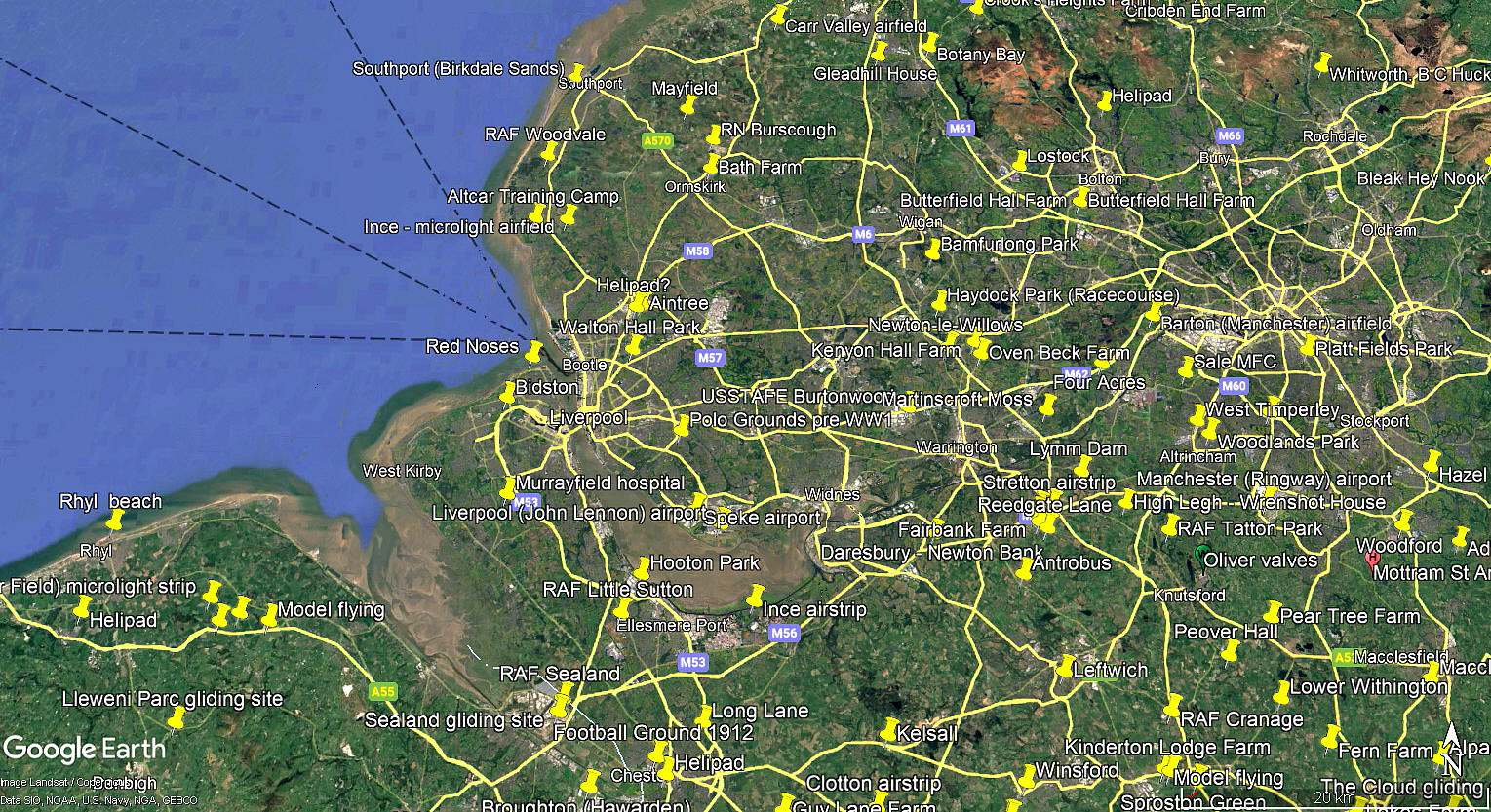Liverpool Polo Ground
LIVERPOOL POLO GROUND: Temporary Landing Ground
Note: Both of these maps and the picture were kindly provided by Mr Michael T Holder
Location: S of Dunbabin Road, E of Queens Drive, S of the B5178, about 3.75nm ESE of Liverpool city centre
Period of operation: 1911 to 1914
NOTES: The picture from Flight magazine, published on the 8th July 1911, shows Mr H G Melly performing a 'vol plané' in his Blériot. Other famous aviators of the period includes, S F Cody, Claude Grahame-White and Compton Patterson.
What we need to remember is that the early rotary engines had only two power settings - full power or off. So a 'vol plané' landing was a glide approach without any assistance from the engine. A method which in many ways, in those days, clearly showed the expertise of the best pilots of those times.
Later, a 'blip'switch was provided to enable the pilot, if the engine was still turning over, to adjust his approach for landing by adding or decreasing power. Adding power quickly increases height.
A MICHAEL T HOLDER GALLERY
This gallery is a departure from what we normally feature in this 'Guide' in that it features a single personality - Mr 'Tom' Elder Hearn. Having found these items, Mike and I both agreed that they help to illustrate several aspects about early powered flight, including what some British aviators got up to. The novelty being that Mr Elder Hearn was, at this time, well known for being on the stage as a 'comic' juggler! Billed as being "The laziest juggler in the world."
At some point in 1913 he took great interest in the 'new fangled' business of powered aviation, and decided to get involved. We have no idea how he obtained the means for doing this, his earnings on the stage as a supporting act would surely not have been sufficient? What we find of some interest is that rather than learning to fly at a flying school in the U.K., he elected instead to enrol at the Blériot School at Buc, (as other British pilots also did), which was just south of Versailles, and about 12nm south-west of the centre of Paris. As the following items show, he made swift progress there, quickly obtaining his pilots license. And, learning to loop the loop!
The Short article One was published in Flight magazine on the 24th January 1914. Short article Two was also published in Flight, but on the 9th May 1914.
Today of course it seems quite extraordinary that such fast progress could have been made in learning how to fly. However, if somebody could quickly adapt to the fairly primitive skills required to master flying an aeroplane, nothing much else was required! Next to nothing was known about the aerodynamic principles of flight, no navigation tests needed. No radio of course or, in the main, virtually no restrictions about where you could fly, or for that matter, where you could land! Indeed, an unexpected arrival of an aeroplane nigh on anywhere, was both welcomed with open arms, often resulting in large crowds gathering. Has to be said though, that flying around away from an aerodrome was a risky business at best.
BEING A VISIONARY BUT ALSO VERY PRACTICAL
This Short article Three, once again from Flight magazine, was published on the 4th April 1914. As shown above, for Mr Hearn to imagine that an aeroplane could be used to fly from venue to venue for his acts on stage, at that time, was quite extraordinary. Took at least another thirty years of aviation development before that concept became, in the UK at least, a realistic prospect. But, how did he wangle getting to fly with Henri Salmet from Buc to England? Salmet was one of the most famous aviators at that time, especially in the UK, so getting navigation experience with Salmet was brilliant.
The photo of T Elder Hearn, taken at the LIVERPOOL POLO GROUND, was published in Flight on the 10th July 1914. Article One in two parts was published in Flight, but this time on the 15th May 1914.
The advert appeared in the Liverpool Daily Post on the 20th May 1914. The Short article Four was published, yep, here again in Flight, on the 22nd May 1914. So, here he was with, frankly, bugger all flying hours ' on the clock', doing displays and carrying passengers.
We'd love to hear from you, so please scroll down to leave a comment!
Leave a comment ...
Copyright (c) UK Airfield Guide















